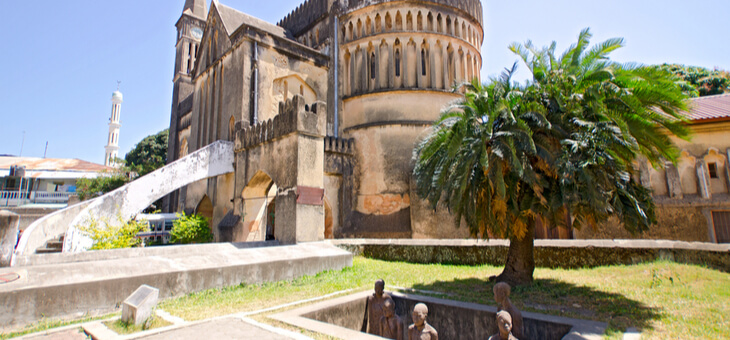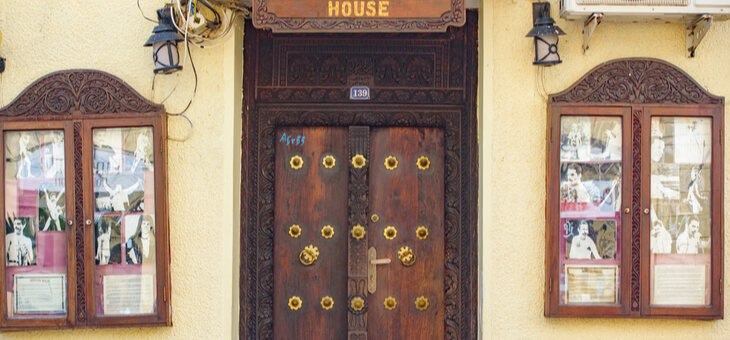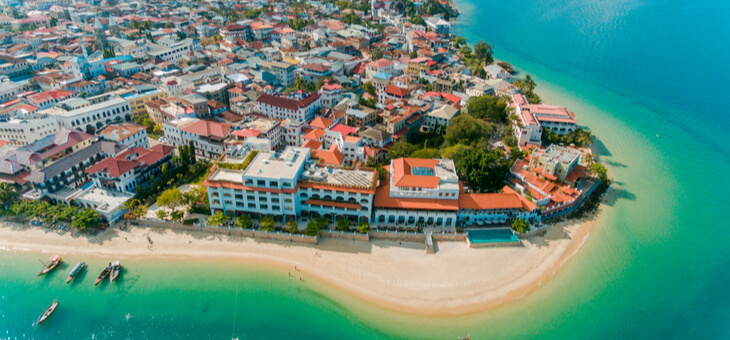As the sun rises over the Indian Ocean and prayer fills the sleepy streets, a peaceful presence washes over the island. On awakening all is still and silent, except for the unwavering, beating rhythm of Africa through the earth. The air is sticky and I wait for the tropical breeze to sweep over the sand, bringing with it the heady scent of smoke and spice from Stone Town.
This hidden gem lies 35 kilometres off the coast of east Africa. An hour’s ferry ride away, or a short flight via a 12-person propellor from mainland Tanzania, is a destination sought by global travellers.
The beaches are glorious with stunning white sand and crystal waters. The northeast coast is brimming with boutique hotels and tropical island hotspots. The south is a dolphin’s utopia; swimming with the wild and playful creatures was an experience I’ll remember forever.
Read: Sudan: A land worth the wait
Zanzibar is, indeed, a tropical paradise. But look beneath the superficial layer of tourism and you’ll find the African island has a culture, history and lifestyle worth exploring.
A vital entrepôt
It is suspected that Zanzibar’s history dates back at least 20,000 years. It’s considered a gateway between Africa, Asia and the Middle East, and has played a critical role in imports and exports for centuries.
People from Persia arrived in the 900s, and it is thought that traders from Yemen built the first mosque in the Southern Hemisphere dating back to 1107. Zanzibar became part of the Portuguese Empire in the 1500s and when the Arab rulers of Oman captured Mombasa in Kenya in 1698 the island came under Omani rule.
Read: An African adventure like no other
In the 1800s, the sultan of Oman made Zanzibar his home and it was at this time that the slave trade began and played a large role in the economy. It is estimated that 50,000 slaves passed through the island each year. Today, there are a few select sites where it is possible to learn about the history of the slave trade in Zanzibar and experience the conditions that the people suffered in during this time.

From 1890, Great Britain took charge of Zanzibar. Not long after, the world’s shortest recorded war took place, lasting a total of 38 minutes! The Anglo-Zanzibar War of 1896 saw the British Empire and the Sultanate of Zanzibar at odds over who should succeed the throne.
In 1964, Zanzibar decided to unite with Tanganyika, the mainland. Together they created the United Republic of Tanzania, a name created as a combination of the two places.
Creative craftmanship
Stone Town is the old part of Zanzibar, exuding a Moroccan feel with busy laneways, beautifully adorned architecture and spice markets. The name comes from the ornate houses built with local stone by Arab traders and slavers. The town was declared a World Heritage site in 2000, in recognition of the superb architecture combining styles from Africa, Arabia, Persia, India and Europe.
The colourful doors to the entrances of each building are a particular delight, the brass handles are miniature versions of those found in India to deter war elephants from ramming the doors down. Fear not, these door handles are merely decorative, and there are no elephants in Zanzibar!
Wandering the streets of Stone Town is to experience many of the local delights. Try your hand at haggling, or head further down the alleyways for quieter stores with more humble owners. The handmade jewellery is gorgeous, using traditional techniques and often incorporating seashells and local wood and stone. You might even like to try to snag a tanzanite jewel – one of the rarest gemstones on earth, and only found in Tanzania.
The spice industry still plays an important role in the exportation and economy of Zanzibar, including cloves, nutmeg, cinnamon, pepper and ginger. An experience in producing flavoured tea using fresh spices is a wonder – my personal favourite, introduced to me on a spice tour through Stone Town, was vanilla and lemongrass. A night food market is also held in the town square.

Even the music industry has ties to Zanzibar, being the birthplace of Queen’s Freddie Mercury. His childhood home is an international tourism destination in itself.

A blended culture
Due to its rich history, Zanzibar is a conglomerate of cultures. At a quick glance, Islamic and Indian influences are evident, and the language of Zanzibar is an Arabic dialect of Swahili. However, tribes from the mainland, such as the Maasai, have ventured across the water, often to sell their traditional jewellery.

If you really want to immerse yourself in the culture of the island, volunteer to teach English in a remote village called Jambiani on the east coast.
Read: Volunteering while travelling
You can teach for one week, or for three months as I did. Teach adults business English to help them achieve their goal of becoming tour guides in the booming tourism industry, one of the best-paid jobs on the island. Teach a women’s group English in a tailor shop, chatting while sewing clothes together. Teach preschool students who are full of zest, energy and curiosity.

It is a thoroughly enriching and inspirational experience, not just glimpsing a different culture and way of life, but noticing how genuinely happy the local population is with their lifestyle, education, family and friends.
Could we, in Australia, take a leaf out of the wise and cultured book of Zanzibar?
If you enjoy our content, don’t keep it to yourself. Share our free eNews with your friends and encourage them to sign up.

